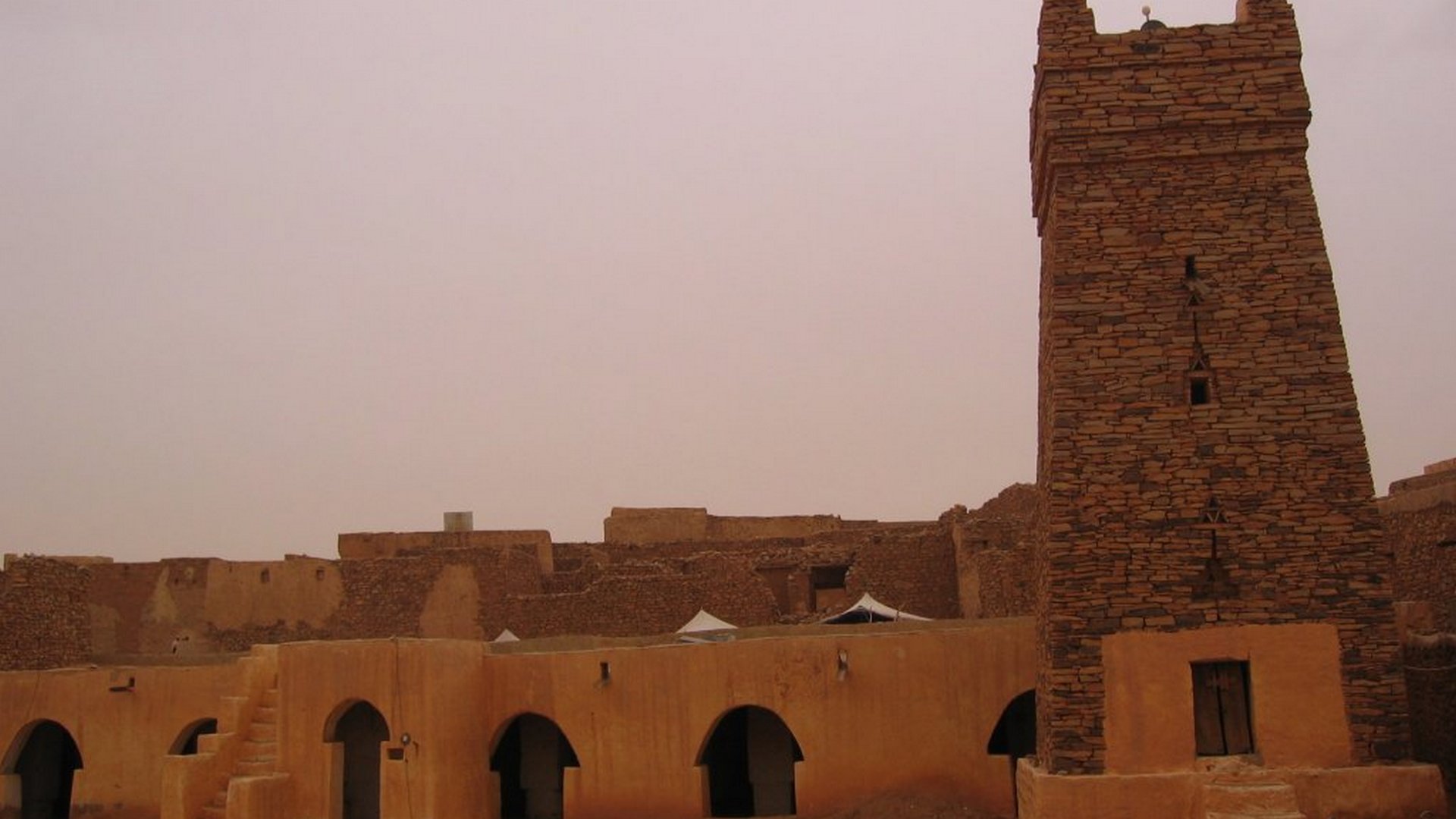Description
Property Name: Chinguetti Great Mosque
Inventory No: 222-546-1
Date of infill of the inventory form: 2008-02-20
Country (State party): Mauritania
Province: Atar
Town: Chinguetti
Geographic coordinates: 20° 27′ 13.09″ N
12° 21′ 55.2″ W
Historic Period: 17th century, 2nd half
Year of Construction: 13th-15th centuries
Style:
Original Use: Mosque
Current Use: Mosque
Architect: Unknown
Significance
The mosque is built on a city that in on the Sharan caravan route and an important Muslim centre from the 13th century onwards. It is constructed of split stone and clay with a roof of palm beams on stone piers. Twin mihrab and minbar niches are built into the qibla wall, which is typical of the mosques of the region. A square minaret of the sawma’a type rises from the south-west corner of the courtyard. Excavations point out that aprevious mosque had existed on the spot.
Selection Criteria
vi. to be directly or tangibly associated with events or living traditions, with ideas, or with beliefs, with artistic and literary works of outstanding universal significance
State of Preservation
It was an ancient center of worship created by the founders of the oasis city of Chinguetti in the Adrar region of Mauritania in the thirteenth or fourteenth century.[1] The minaret of this ancient structure is supposed to be the second oldest in continuous use anywhere in the Muslim world. In the 1970s the mosque was restored through a UNESCO effort, but it, along with the city itself, continues to be threatened by intense desertification.
References
Michell, George. ed. 1978. Architecture of the Islamic World; Its History and Social Meaning. London: Thames & Hudson.


